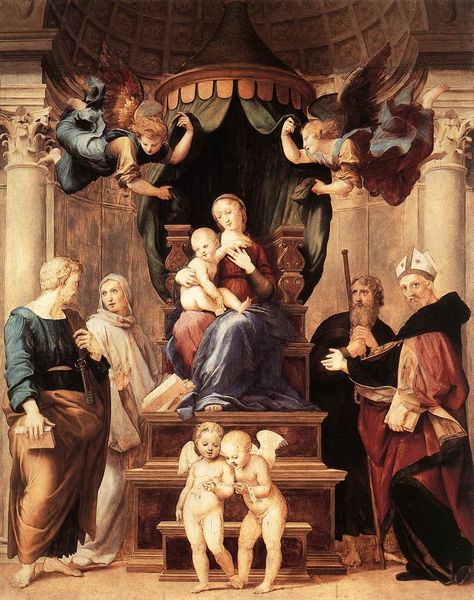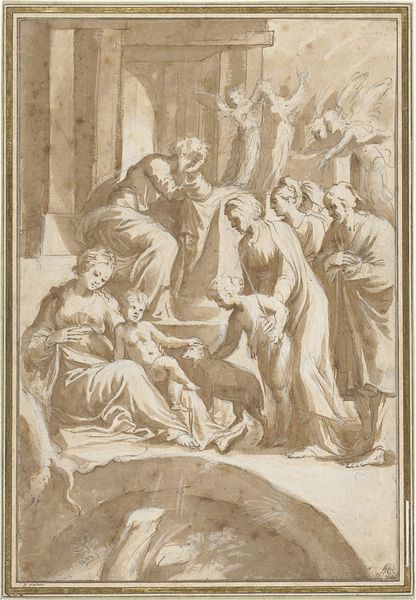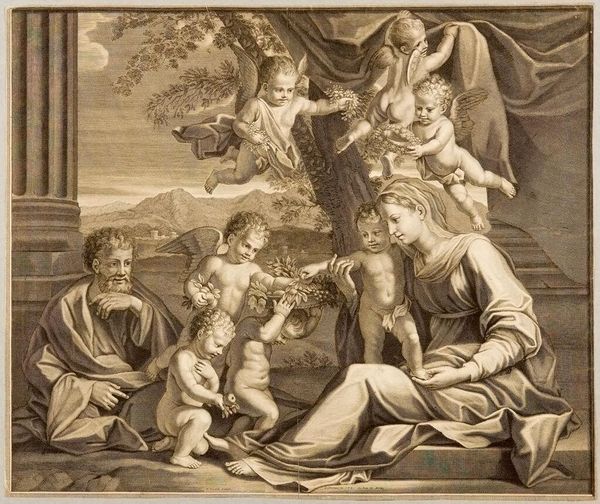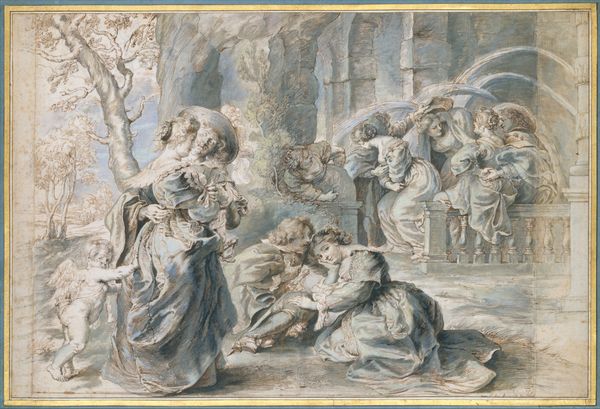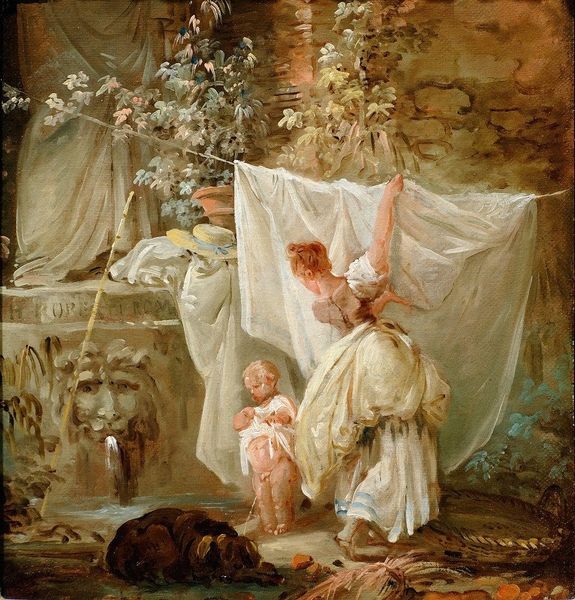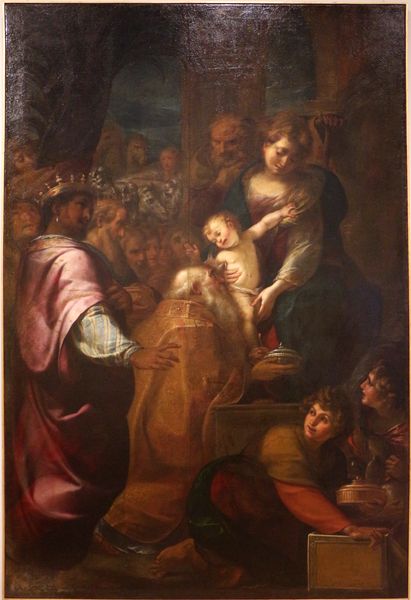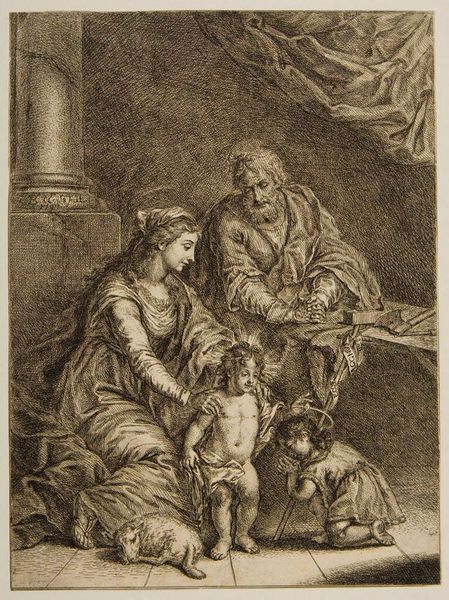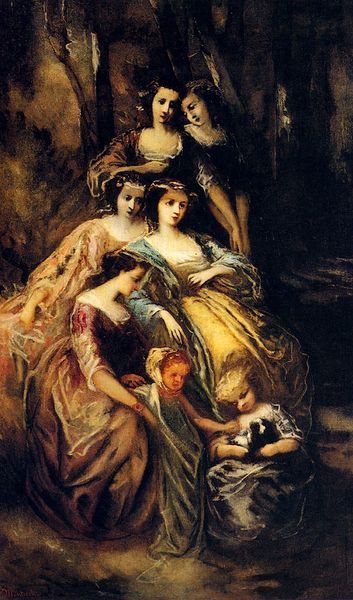
painting, oil-paint
#
allegory
#
baroque
#
painting
#
oil-paint
#
figuration
#
oil painting
#
mythology
#
history-painting
Dimensions: 28 x 26 cm
Copyright: Public domain
Curator: Peter Paul Rubens, painted "Achilles and the Daughters of Lykomedes" in 1617. It’s an oil on canvas work depicting a scene from Greek mythology. Editor: Whoa, it feels like stumbling into someone else's play! So much hidden tension, so many secrets barely kept. The colors are so rich and creamy, but also a little bit claustrophobic. Curator: Absolutely. Rubens masterfully captures the moment when Achilles, disguised as a maiden, is revealed amongst the daughters of King Lykomedes. The narrative hinges on Achilles’ attempt to evade the Trojan War, a conflict he's destined to play a central role in. His mother, Thetis, orchestrates his disguise to prevent him from meeting his fate at Troy. Editor: And there he is! Among all the girls, handling that sword like he’s been waiting for this very moment! There's such a deliberate arrangement to the painting. The daughters seem demure, graceful even. Then *bam*, our Achilles makes a grab for the shiny weapon! That contrast is everything. Is Rubens suggesting that gender is just a performance? Curator: The piece certainly provokes questions about performance and identity. The sword is such a phallic symbol against the softness of the gowns. Achilles' intentional grab might signify his rejection of the domestic, his true calling in warfare. It’s really interesting how you call out the theatrical aspects of this painting, because it has prompted scholars to investigate queer undertones in mythology. Editor: What's striking is the raw emotion pulsing underneath this elaborate façade. There is an almost theatrical vibe to the way these women look. I guess everyone's play-acting their parts, some just better than others. There is such attention paid to surface texture. It really creates that hyper realistic feel which creates drama. Curator: Yes, Rubens's skill in rendering fabrics and skin creates an incredible sense of immediacy. He highlights the societal expectations imposed upon individuals, and how these expectations often lead to internal conflicts, or even force someone to play roles. These are questions very resonant even in contemporary discussions on gender and identity. Editor: That’s pretty awesome. You can feel those tensions bubbling through all the layers. Even centuries later. What a thought. Curator: Indeed. Looking closer at paintings like this reminds us that these works continue to stimulate interpretations around personal identity and its negotiation with greater powers that organize our society.
Comments
No comments
Be the first to comment and join the conversation on the ultimate creative platform.
